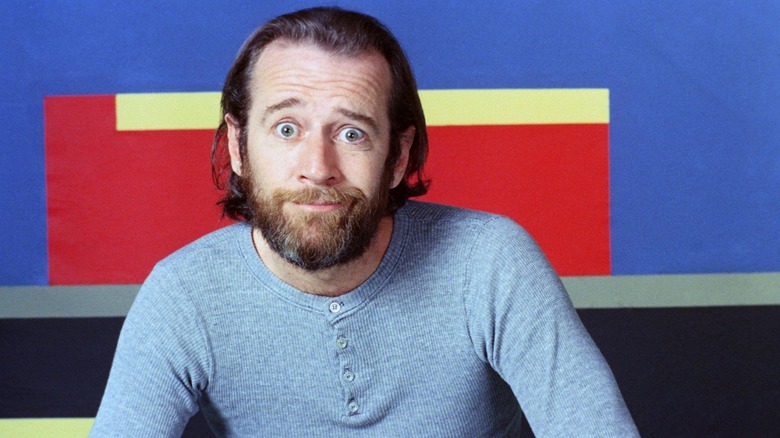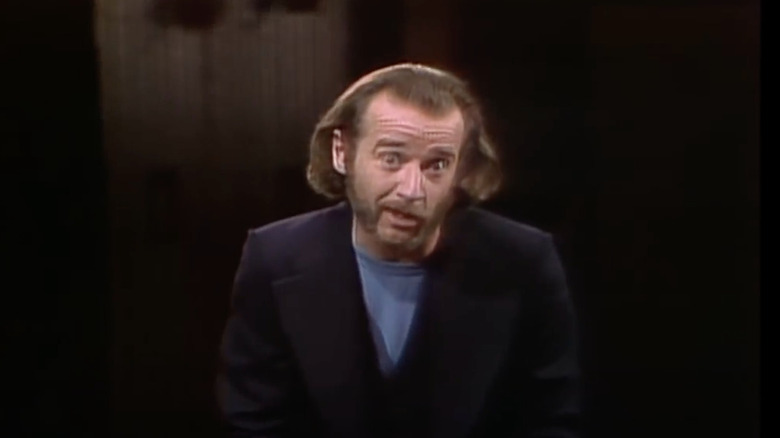George Carlin's T-Shirt Almost Derailed Saturday Night Live's Premiere
When "Saturday Night Live" hit NBC's airwaves on October 11, 1975, at 11:30 p.m. EDT, numerous broadcast standards were about to be skirted if not outright flouted. Lorne Michaels had assembled a supremely talented cast of Baby Boomer comedic performers and Chevy Chase to, hopefully, transform the once undesirable time slot into a must-watch 90 minutes for people who were busy closing bars or turning in early on their last night off for the weekend.
Michaels needed everything to feel counterintuitive, if not ragged. It was a bracing olio of sketches, music performances (from Billy Preston and Janis Ian), pre-filmed bits, and Jim Henson's proto-Muppet project, "The Land of Gorch." There'd never been anything like it on American television, and the first episode evoked enough laughs to keep viewers coming back for more.
The debut episode's ace in the hole was George Carlin. The brilliant stand-up comic had become a counterculture firebrand thanks to his "Seven Dirty Words" routine, and though he was still a regular presence on network television, the notion of giving him a live set smacked of danger. Would he blurt out one of the verboten words?
Perhaps anticipating a rebellious outburst from Carlin, NBC saddled the comedian with a strict dress code, which, according to Michaels, turned out to be the evening's biggest content battle.
Carlin played ball in the most Carlin way imaginable
Per Tom Shales and James Andrew Miller's "Live from New York: The Complete, Uncensored History of Saturday Night Live as Told by Its Stars, Writers, and Guests," Dave Tebet, NBC's head of talent, refused to allow Carlin to host the episode in a t-shirt. Tebet had been supportive of the show, so Michaels felt obliged to honor this request. As Michaels told Shales and Miller:
"The fear was that if George was in a T-shirt and it looked like the wrong kind of show, we would lose affiliates, and we weren't anywhere near 100 percent as it was. And the compromise was a suit with a T-shirt instead of a tie. That was a much greater distraction than can possibly be understood right now."
SNL associate producer Craig Kellem called Tebet "the Don Corleone of network executives," and remembered the imperious suit demanding that Carlin get a haircut and wear socks — which, in the permissive era of the 1970s, was not a high priority for Boomer network execs, let alone a hellraiser like George Carlin.
Ultimately, Carlin wore a suit and t-shirt, so he looked smart while delivering his famous anti-war monologue about the differences between baseball and football. He was also so baked out of his gourd that he couldn't participate in any of the sketches. Point: Carlin.

